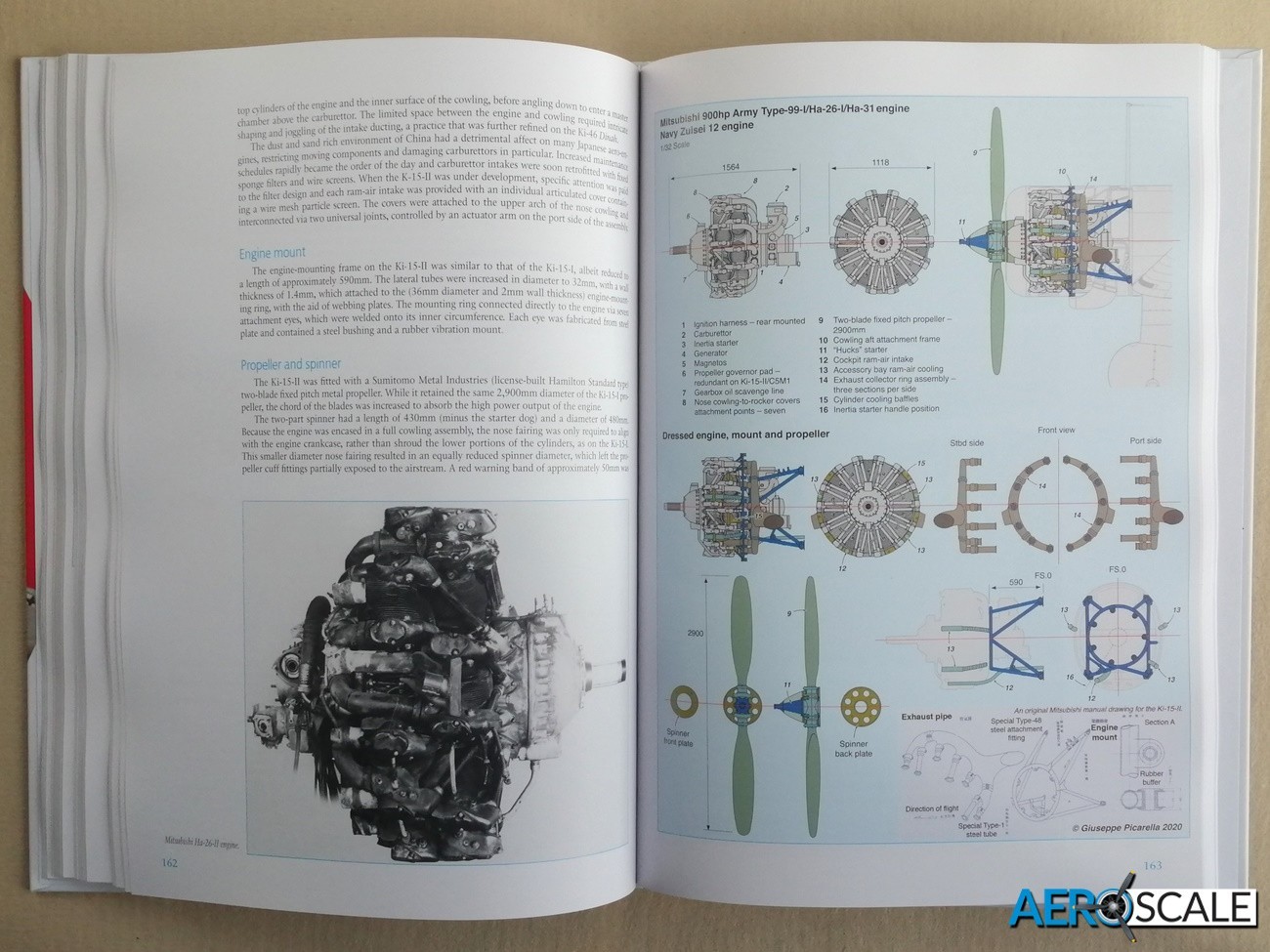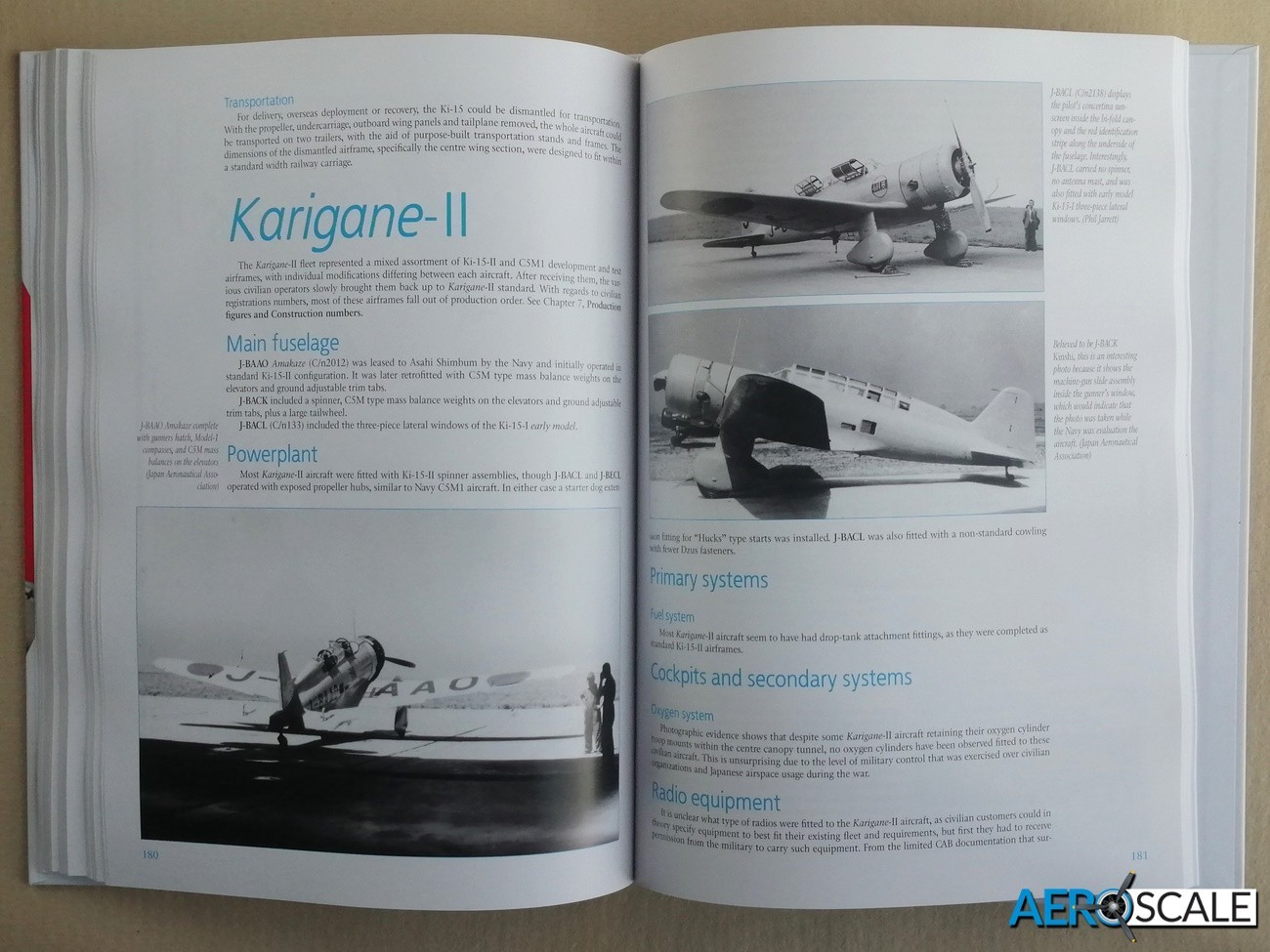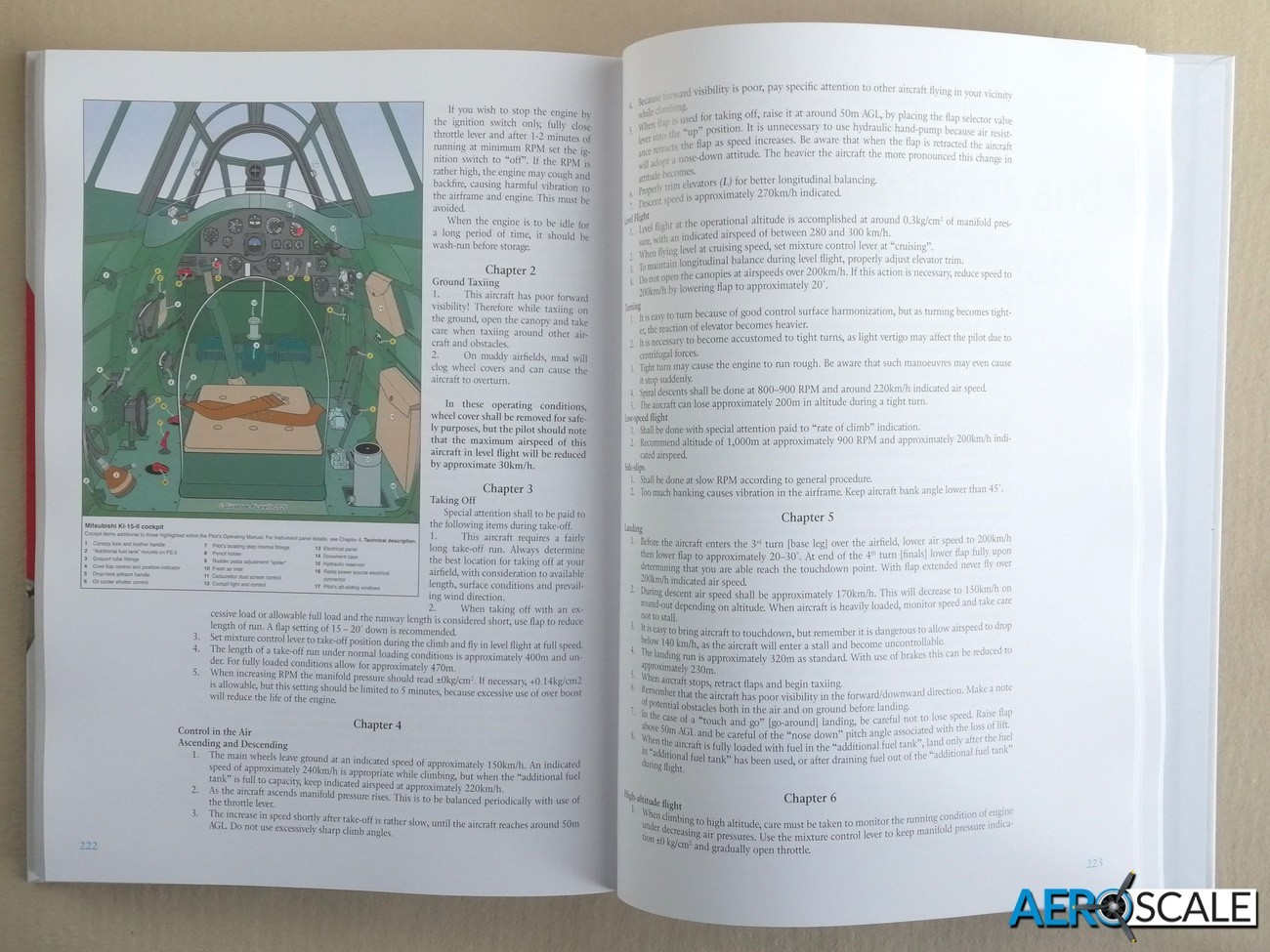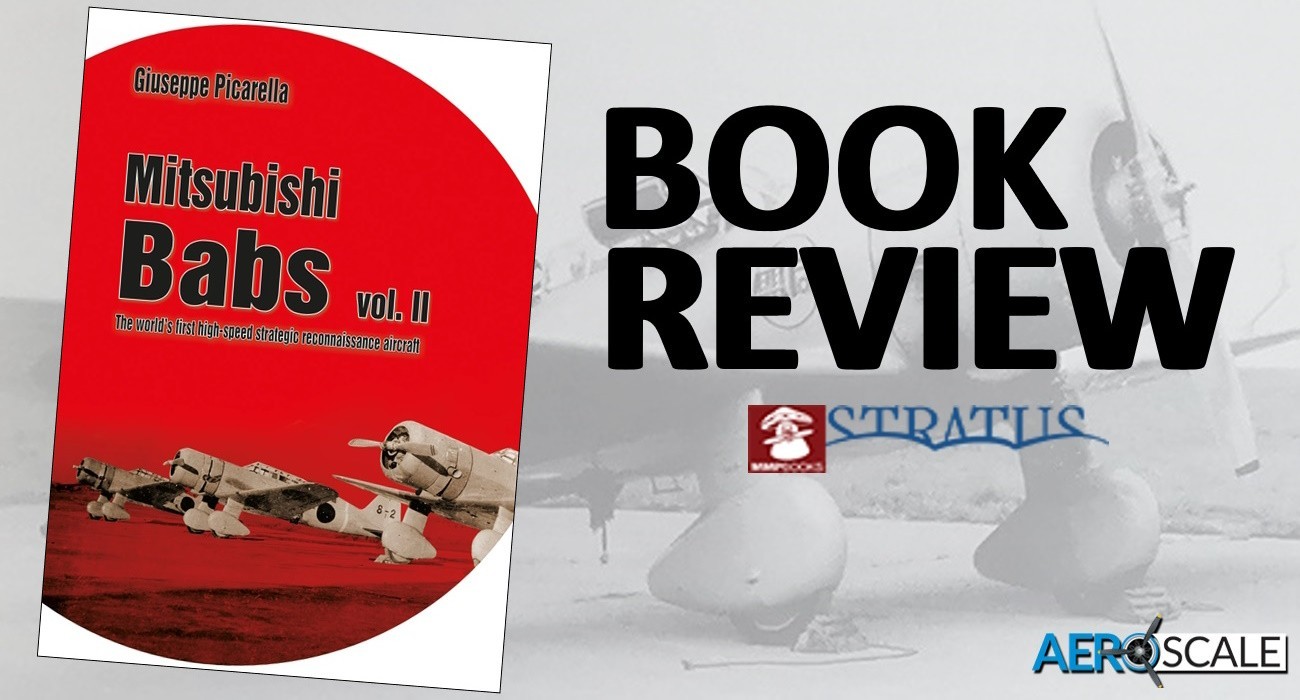
The second volume from Stratus/MMP on the Mitsubishi Babs chronicles the conception, design, development and utilisation of the world’s first high speed strategic reconnaissance aircraft
From the mid 1930’s until the early 1940’s Japan enjoyed a ‘golden age’ in aeronautics. The military side of the aircraft industry flourished in Japan with support from both the Navy and Army. One of the products of this ‘golden age’ was the Mitsubishi Ki-15 Babs Army Type 97, the first high speed strategic reconnaissance aircraft in the world.
Inside the hard back cover, you will find:
- Introduction and Acknowledgements.
- Notes.
- Chapter 1: Brothers in arms.
- Chapter 2: Western intelligence reports.
- Chapter 3: Soviet intelligence reports.
- Chapter 4: Technical description: Ki-15-I/Kamikaze/Karigane-I/Ki-15-II/Karigane-II/C5M1/C5M2/Ki-15-III
- Chapter 5: Pilots operating manual
- Chapter 6: Dimensions and performance figures
- Chapter 7: Production figures and construction numbers.
- Chapter 8: Models, memorabilia, and memorials.


Before delving into ‘Babs’ Vol II, just a few notes on the author Giuseppe Picarella. He has worked for over 30 years in the aerospace industry creating cutaway illustrations, bringing him contact with many modern aerospace projects. He has also devoted over 35 years researching and restoring WWII Japanese aircraft. He has as such built up a expertise that he writes, lectures and is a consultant to numerous museums and private collections around the world, including the RAF museum and Imperial war museum. He is also a member of the Royal Aeronautical Society and a pilot. He operates along with his wife a 1942 Piper L-4B Grasshopper.
Back to the book, The Notes has a useful section explain the various designations for the Babs: Army [Ki-15], Navy [C5M] and civilian [Kamikaze and Karigane] . Often a source of great confusion


Chapter 1: Brothers in arms lays the background for the introduction of the the Navy's C5M1 during the second Sino-Japanese war. The problems encountered by the Japanese in penetrating deeply into hostile airspace would be a familiar one later for the Allies. For the reconnaissance role the Japanese Navy tested several types before they selected C5M1 a modified version of the army's Ki-15. Other examined for the role included the Nakajima C2NI/2 and the C3N1, Mitsubishi Ka-9/G1M1, Aichi C4A1 and the American built Seversky A8V1 [type S]. All of which are looked at in the chapter. There are details of the colour schemes, production and unit markings accompanied by numerous 1:72 and 1:48 scale plans of the C5M1 and the C5M2. The chapter describes the development of the navy’s new reconnaissance aircraft as well as an operational overview of Japanese operations over China and the Japanese expansion in the Pacific. There are details of the Babs operating as a bomber interceptor using incendiary ordnance.


Chapter 2 Western intelligence reports is a tale of confusion and conjecture regarding the Babs during WWII. Despite the quite open information about the Kamikazee and Karigane pre-WWII, the attack on Pearl Harbour brought a desperate search for information on the Babs and other operational Japanese aircraft. It took around four years before the Allies fully understood the capabilities and purpose of the Babs. The chapter features many images of identification documents including the US FM 30-38, as well as cardboard, wooden and cellulose acetate ID models. There were even ‘View-Master stereo images produced to help servicemen ID the type.


Chapter 3 Soviet intelligence report. The Russians had first hand experience with the Babs. A number had been shot down by the Soviets during the battles of Khalkhin Gol/Nomonhan. They were fortunate to have an example crash land in the Spassk District of Primorsky 150 miles NE of Vladivostok. The chapter features a translation of the full engineers report accompanied by four photographs of the damaged airframe lying in the snow.


Chapter 4 Technical description: is the biggest chapter of the book at 146 pages. It cover in great detail the Ki-15-I/Kamikaze/Karigane-I/Ki-15-II/Karigane-II/C5M1/C5M2/Ki-15-III in individual sections. There are numerous detail photographs of the inside and outside the airframe, powerplant, rear firing gun, camera, and radio equipment. There are even many photographs of the airframe placards. There is an abundance of 1:32, 1:48 and 1:72 scale illustration showing the construction of the airframe, canopy, the layout of the flight control and hydraulic systems and fuel tanks. The numerous drawings of the cockpit layout are excellent illustrating the positions of both crew members. Particularly interesting is the illustrations of the position of the observer carrying out various tasks. There are more scale illustrations of the props, engine, and bearers and so much more. The colour exploded views by the author from CutawayCompany.Com of the Ki-15-I,Ki-15-II, C5M1, and C5M2 provide an excellent overall view of the internal parts of the Babs. Towards the end of the chapter there is a page illustrating the family tree of the Babs. It takes the form of a recognition guide of each model of the Babs, illustrated with side profiles each of which is annotated.

Chapter 5 Pilots operating manual applies to the Ki-15-II and dated August 1937. Its very detailed and covers starting, engine test, ground taxiing, take off, control in the air, controls in flight and finally emergency landing. There is a useful annotated illustration of the front cockpit.
Chapter 6 Dimensions and performance figures features several original blueprints. The section on performance figures is fascinating as the author works out the performance figures of the ‘Babs’. Obviously, this varies with each type and Mitsubishis own performance figures were very understandably conservative. None the less the author calculates that the C5M2 had the potential range of 3,252 km under operational conditions with an endurance of just over eight hours. Remarkable if that is the case and mainly thanks to the lean cruise performance of the Sakae 12/NK1C engine manufactured by Nakajima.

The author delves into the murky world of the Babs Production figures and construction numbers in Chapter 7. The author supported with careful research concludes that just under 500 Babs of all marks were built. The chapter also reflects on the somewhat bitter rivalry between the Japanese Army and Navy Services and its consequences.
Chapter 8 Models, memorabilia, and memorials. The short section on scale plastic models for the ‘Babs’ is useful if reading the book peaks your interest in building a model. Nice to see a selection of kits box lid artworks. There is a page with images of some of the memorabilia associated with the flight of ‘Kamikaze’ from Tokyo to London and back.

Overall the narrative is a well written so the book is easy to read. Its worth making a mental note or otherwise of the of the various designations of the Babs in civil, Army and Navy guises.
Conclusion
This is an incredibly researched book by Guiseppe Picarella of the Mitsubishi Babs. The authors enthusiasm for the subject is plain to see. It’s no mean task researching a subject such as the ‘Babs’ and this second volume delivers a remarkably detailed technical description as well as an account of its service with the Japanese Army and Navy. The narrative is accompanied with a huge number of equally remarkable photographs, illustrations and scale drawings. If you have the authors first volume of the Babs, then you will know what to expect with Vol II. Personally, I don’t think I have read an aviation book that goes into so much depth while being supported by a large collection of photographs and illustrations. The author certainly leaves no stone upturned and brings the Babs front and centre for some long overdue attention. I cannot recommend this book highly enough.
Mitsubishi Babs vol. II
- Author: Giuseppe Picarella
- Illustrator: Giuseppe Picarella
- Pages: 248
- Format: A4 Hard cover
- Release date: 2023-10-05
- ISBN: 9788367227162
- Catalogue no: Babs 2
Review of Mitsubishi Babs vol I. Babs Vol II is available from Stratus/MMP and the price is £40
Many thanks to Stratus/MMP for a copy of the book for this review.
Please remember, when contacting retailers or manufacturers, to mention that you saw their products highlighted here – on AEROSCALE.



























![Junkers F13 [Early Prod] With Winter Skis Coming Soon](/upload/media/posts/2025-07/22/48020-junkers-f13-with-winter-ski-early-prod_1753181324-s.jpg)